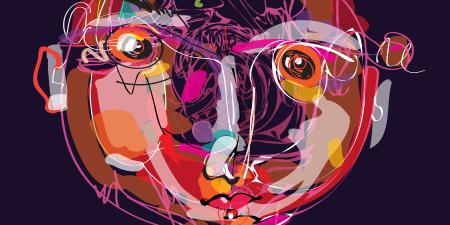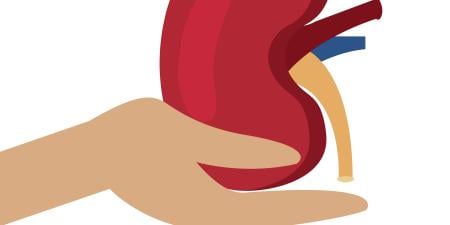Case
Dr. Tan had been a transplant surgeon for 7 years but had never come across a case like this. His patient Victoria had grown tired of waiting for help. She had been diagnosed with end-stage renal disease 3 years prior and was in need of an organ transplant. Due to her illness and the burdens of dialysis she had been unable to keep up with her college classes, and her modeling career, once blossoming, now seemed over. None of her living relatives was a match, and she knew her chances of receiving a deceased-donor organ in Massachusetts, her home state, were low. So she took matters into her own hands and created a profile on matchingdonors.com. She included her compelling narrative and a picture of herself.
It was through this site that Carolyn contacted her. Carolyn had lost her sister to kidney failure and had looked through the profiles to find an individual she considered worthy of receiving one of her kidneys. She read Victoria’s profile and wanted to donate to her. Carolyn flew to Massachusetts from Wyoming to meet with Victoria and the transplant team.
Dr. Tan brought up this case and his hesitation during the transplant center’s organ selection committee meeting. He said, “What is our experience using online portals for living donation? I have to admit I have never come across a donation like this. Radical altruism that involves a life-threatening sacrifice calls for careful scrutiny. It is our job to assess our potential donor, considering all dimensions. Is this type of organ solicitation fair? Does it threaten the view that an organ is not a commodity that can be bought and sold? Is our donor candidate trying to compensate for depression, seeking media attention, or harboring hopes of becoming involved in the recipient’s life? Is operating outside United Network for Organ Sharing (UNOS) legitimate?”
Commentary
Cases such as the one described by Dr. Tan are not uncommon at transplant centers in the United States. The Internet and social media tools are now being used to facilitate access to transplantation [1, 2]. Most adults are users of the Internet in some format (e.g., web browsing, e-mail, blogs, Facebook, Twitter), so it is not surprising that it could be a resource for those with end-stage disease seeking an organ donor. Formal websites that attempt to link potential donors and patients include matchingdonors.com, kidneymitzvah.com, and kidneyregistry.org. Informal mechanisms include Internet chat rooms and message boards.
Society (and transplant centers) cannot regulate how people establish relationships, but when a donor-recipient pair comes together through Internet solicitation, the transplant center has a responsibility to evaluate the intended donation carefully, not only clinically but ethically, by assessing the donor’s motivations [3]. Specifically, the transplant center is looking for donor candidates with altruistic rather than self-serving motivations (e.g., seeking publicity, psychological repair, monetary reward). In the United States, donors may receive reimbursement for their donation-related expenses, but they must not be paid for their organ—it is a gift.
How Do Living-Donor Teams Accomplish Their Task?
The use of a multidisciplinary approach to explore the medical, surgical, psychosocial, and ethical issues in live organ donation is especially necessary in these instances of Internet solicitation. The transplant team must assess the potential donor to rule out “high-risk” candidates for a current or prior psychiatric history (including substance abuse or dependence), financial problems that might result in extortion of the recipient, impaired cognition that might compromise the donor’s ability to understand the nature of the surgical procedure and the potential for complications, ambivalence about donating, unrealistic expectations about the donation, a self-centered motivation (as described above), and lack of a stable support system for the donor during the recovery process [4, 5]. Thus, Dr. Tan’s concerns are pertinent regarding Carolyn’s donation as a remedy for depression, a means for seeking media attention, or a hope of being involved in the life of the recipient.
Dr. Tan should also be concerned that Carolyn has “shopped” among many needy patients for a recipient who is “worthy” of her kidney. When a deceased person’s organs are donated, although directed donation to family or friends is permissible, the family of the deceased is not allowed to discriminate among candidates on the basis of religion, gender, ethnicity, or socioeconomic status [6]. Carolyn’s motivation in selecting Victoria needs to be explored carefully. If the living donor team concludes that Victoria’s social “worth” is indeed a criterion for Carolyn’s donation, then she may be disqualified as a donor candidate even if she is medically suitable.
If Carolyn is disqualified, she could appeal the decision by the transplant center, or she and Victoria could present them to another hospital for consideration. This latter opportunity may be difficult logistically, depending upon the proximity of other transplant centers. From a legal perspective, nothing prevents Carolyn from hiding her prior disqualification or creating a new, “acceptable” donor narrative. Her candidacy history could easily be questioned, however, if an insurance review reveals multiple charges associated with attempts to assess the same donor candidate at different transplant facilities.
The questions Dr. Tan poses at the close of the scenario are important. It is indeed Dr. Tan’s responsibility to assess all of the aspects of Carolyn’s proposed donation we have noted. He wonders, next, about the fairness of Internet solicitation. While it may not be “fair” for Victoria to have obtained Carolyn’s kidney through the Internet when there are many waiting with just as much need, UNOS cannot regulate the development of relationships as if it were a democratic process. The development of programs of paired donation in the United States is helping to dispel unfairness because altruistic donors can now be aware their gift sets in motion a chain of multiple transplants affecting many potential recipients.
In chain donations, a good Samaritan donor starts a chain reaction of donations by giving to someone who has an incompatible but willing donor. That incompatible donor instead gives to another patient who also has an incompatible intended donor, and so on, creating a cascade effect [7]. Good Samaritan donations, whether in pairs or chains, might still involve the Internet, but the contextual features of these donations free them of the possible ethical problems with general Internet donor solicitation (e.g., selection bias or discrimination, organ vending) [1].
References
- Neidich EM, Neidich AB, Cooper JT, Bramstedt KA. The ethical complexities of online organ solicitation via donor-patient websites: avoiding the “beauty contest”. Am J Transplant. 2011;12(1):43-47.
-
Rodrigue JR, Antonellis T, Mandelbrot DA, Hanto DW. Web-based requests for living organ donors: who are the solicitors? Clin Transplant. 2008;22(6):749-753.
- Delmonico FL, Graham WK. Direction of the Organ Procurement and Transplantation Network and United Network for Organ Sharing regarding the oversight of live donor transplantation and solicitation for organs. Am J Transplant. 2006;6(1):37-40.
-
Bramstedt KA, Down R. The Organ Donor Experience: Good Samaritans and the Meaning of Altruism. Lanham, MD: Rowman and Littlefield; 2011.
- Dew MA, Jacobs CL, Jowsey SG, Hanto R, Miller C, Delmonico FL. Guidelines for the psychosocial evaluation of living unrelated kidney donors in the United States. Am J Transplant. 2007;7(5):1047-1054.
-
Transplant Living. About organ allocation: organ allocation policies. Accessed February 7, 2012.
-
National Kidney Registry web site. http://www.kidneyregistry.org. Accessed January 28, 2012.



